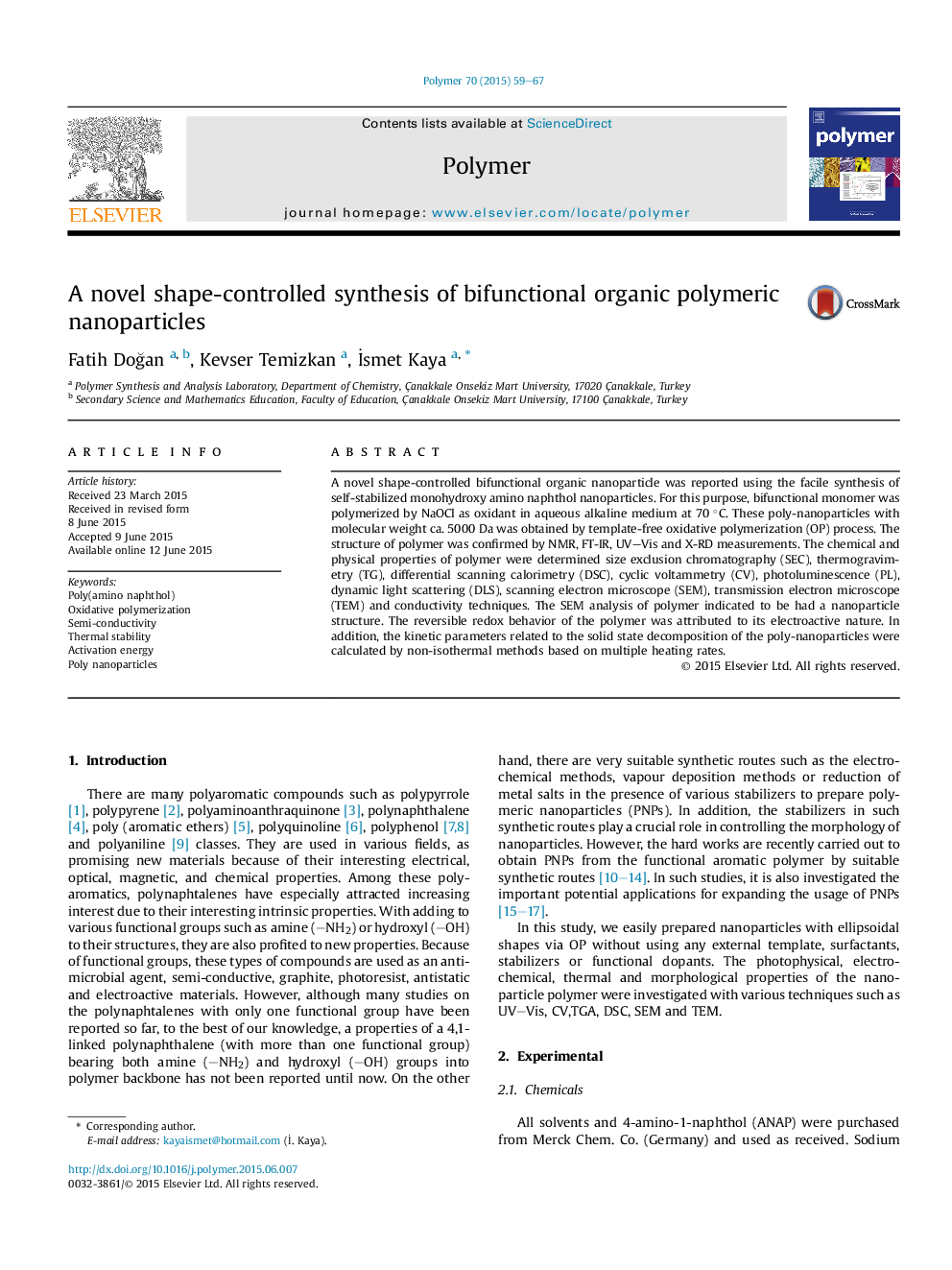| Article ID | Journal | Published Year | Pages | File Type |
|---|---|---|---|---|
| 5179931 | Polymer | 2015 | 9 Pages |
â¢Poly nanoparticles were obtained via OP without using any external template, surfactants, stabilizers or functional dopants.â¢The photophysical and electrochemical of the nanoparticle polymer were investigated with various techniques.â¢The SEM analysis of polymer indicated to be had a nanoparticle structure.â¢The kinetic parameters of the poly-nanoparticles were calculated by non-isothermal methods.
A novel shape-controlled bifunctional organic nanoparticle was reported using the facile synthesis of self-stabilized monohydroxy amino naphthol nanoparticles. For this purpose, bifunctional monomer was polymerized by NaOCl as oxidant in aqueous alkaline medium at 70 °C. These poly-nanoparticles with molecular weight ca. 5000 Da was obtained by template-free oxidative polymerization (OP) process. The structure of polymer was confirmed by NMR, FT-IR, UV-Vis and X-RD measurements. The chemical and physical properties of polymer were determined size exclusion chromatography (SEC), thermogravimetry (TG), differential scanning calorimetry (DSC), cyclic voltammetry (CV), photoluminescence (PL), dynamic light scattering (DLS), scanning electron microscope (SEM), transmission electron microscope (TEM) and conductivity techniques. The SEM analysis of polymer indicated to be had a nanoparticle structure. The reversible redox behavior of the polymer was attributed to its electroactive nature. In addition, the kinetic parameters related to the solid state decomposition of the poly-nanoparticles were calculated by non-isothermal methods based on multiple heating rates.
Graphical abstractDownload high-res image (277KB)Download full-size image
